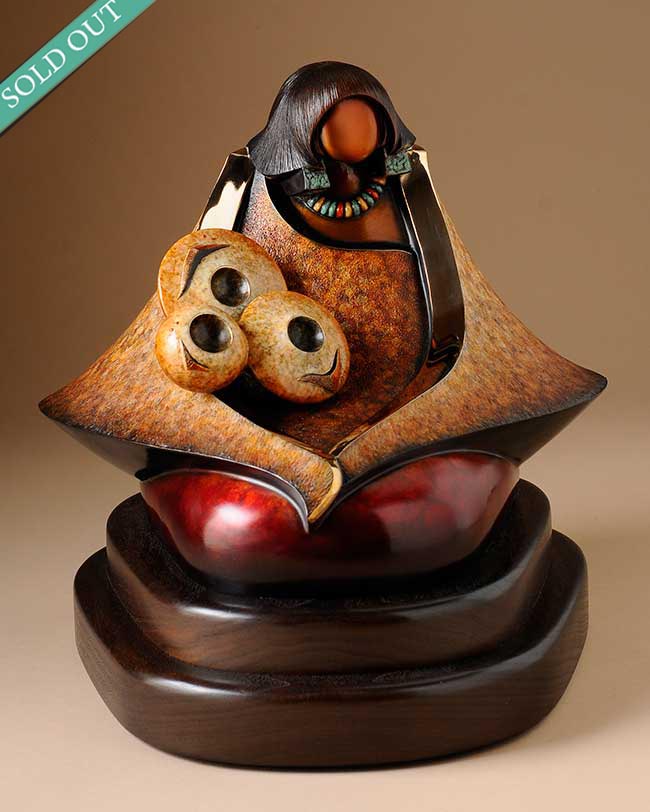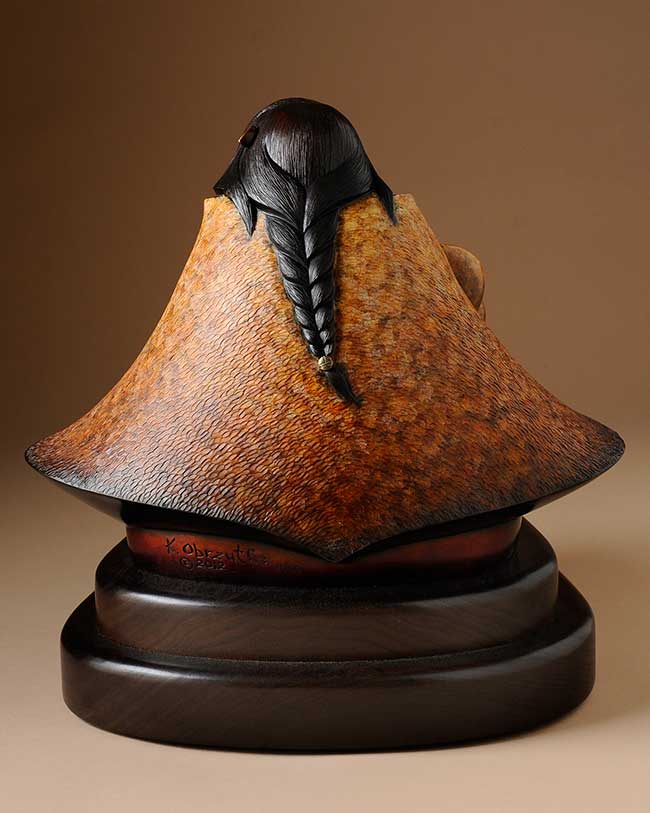Market Day
12'' H x 12'' W
Fired clay is the only material on earth that does not change with time. Much can be learned about an ancient people by studying their clay work. Our ancestors used only baskets until 2000 years ago. To prevent a basket from burning while cooking, clay was placed around the basket and pottery was born. Our clay is gathered from the earth and is prepared using ancient methods handed down from generations to scrape and smooth the clay creating some of the most recognizable art in the world. Once only a plain utilitarian vessel has now developed into internationally collected pieces of art. Some artists creatively evolve their stylized pottery works and others will stick to specific designs.
With the completion of the Santa Fe railroad in Arizona around the late 1800s, Hopi pottery began drawing the curiosity of the outside world. Once our pottery was used only for food preparation, storage and transporting water, potters began elevating the craft of pottery-making to genius level by the early 1900s. The world began a fascination for the infamous polychrome sikyatki revival style Hopi pottery as merchants, traders, and Indian markets began to emerge.
In the 1920s the finest Hopi potters, all women at that time, were encouraged to sign their work bringing many to national attention. Art and History Museums purchased and exhibited their work and hired the artists to demonstrate. From these roots, dynasties began. These women returned to the Mesas and began to show their people how pottery could become a source of income to help sustain their way of life.


